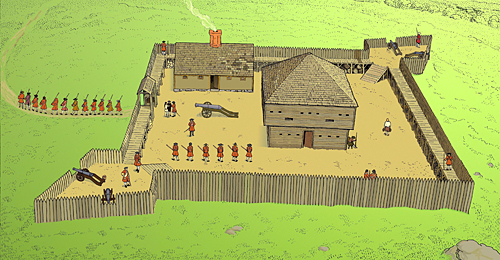DACF Home → Bureaus & Programs → Bureau of Parks and Lands → Discover History & Explore Nature → History & Historic Sites → Colonial Pemaquid → Fort Charles
Fort Charles at Pemaquid

When Fort Charles was built here in 1677, it protected an English settlement that had already been destroyed once during the first of the French and Indian Wars. With its seven cannons and walls made of wooden pickets, Fort Charles appeared to be a strong defensive work in this rough and tumble frontier claimed by both England and France. Despite its appearance of strength, Fort Charles fell in 1689 when Native Americans, encouraged by their French allies, attacked the settlement. As "England's Glorious Revolution" continued, Protestant leaders had seized the colonial government in Boston and arrested the fort's commander, taking him to Boston to be tried as a Papist.
As a result, the fort's garrison was plagued by desertions and numbered as few as 16 men, far too small a group to properly defend it. Still worse, the fort had been built near the large rock that now sits beneath the stone tower here, giving the attackers an ideal place to safely fire at men inside the fort. Early on the second day of the siege, Lieutenant Weems, the senior officer in the fort, negotiated a surrender whereby the remaining English people could safely leave Pemaquid by ship. The defeat of Fort Charles and the Pemaquid settlement was a major victory for the French and their Native American allies. As a result, England abandoned mid-coast Maine for the next three years.